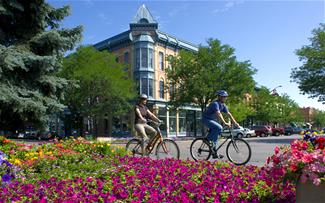
Between 2000 and 2013, there was a 62 percent increase in bike commuting according to the League of American Bicyclists. Unfortunately, with the rise in cyclists, the infrastructure of our communities to support bike commuting has not been keeping up. Yes, cities have added the convenience of bike parking and bike lanes, but there are still other important factors to consider for the safety of our riders, like transportation laws and an improved layout of our roads and intersections.
If we're going to make a strong effort to improve our infrastructure, we need to consider making biking a part of community culture. In a 2015 article on bicycle traffic and infrastructure planning, Caitlin Malloy-Marcon, associate at MKSK Studios, suggested that biking should not just be considered a recreational activity to planners and the communities in which they work. It should be a priority mode of transportation––just like the automobile, bus, or train––and should be included in planning decisions. All modes of transportation should be layers of the overall Community Plan––each working together in the right-of-way and building upon the surrounding land use contexts.
Malloy-Marcon further noted that in order to truly move toward making biking a part of community culture, a complete plan must be implemented that addresses all aspects of the public right-of-way and, ideally, includes a public education campaign. This not only moves a community toward change, but does so in the safest way possible, while maximizing the return on public dollars spent.
A successful biking plan requires guidelines. Check out the printable tip sheet of guidelines written by Malloy-Marcon to ensure that your biking plan will more successfully shift automobile traffic to bike traffic.
New, Reduced Membership Dues
A new, reduced dues rate is available for CAOs/ACAOs, along with additional discounts for those in smaller communities, has been implemented. Learn more and be sure to join or renew today!

